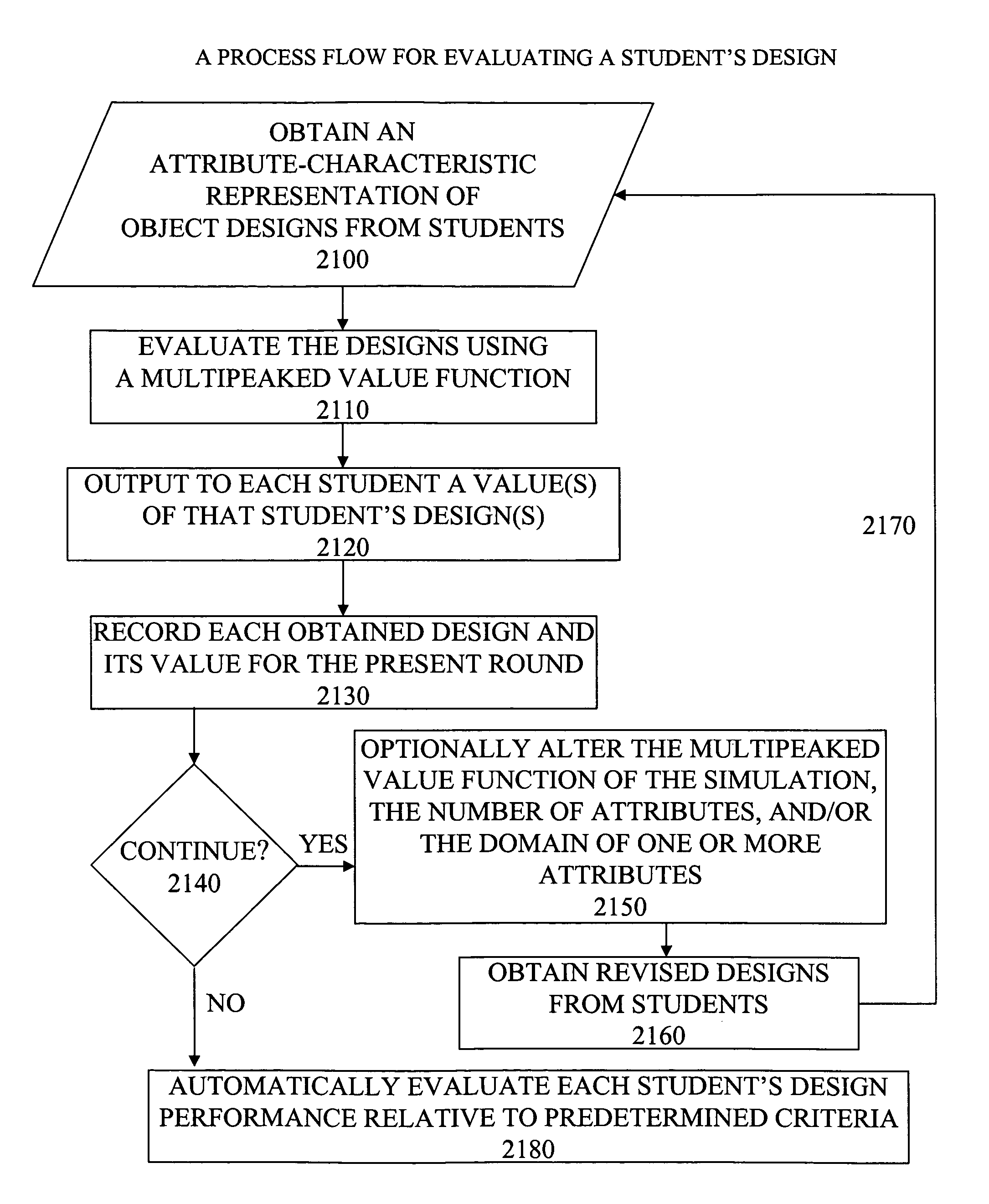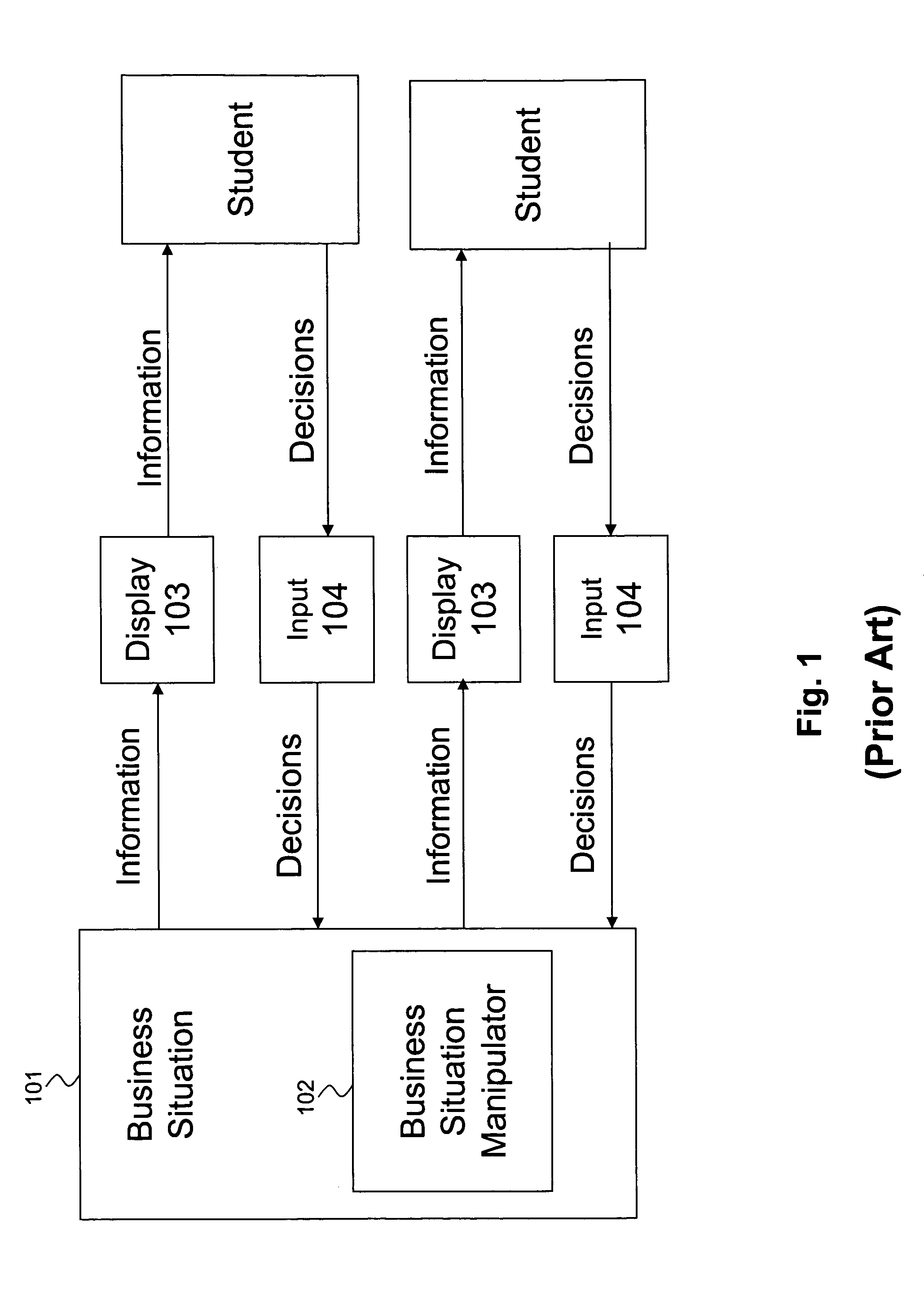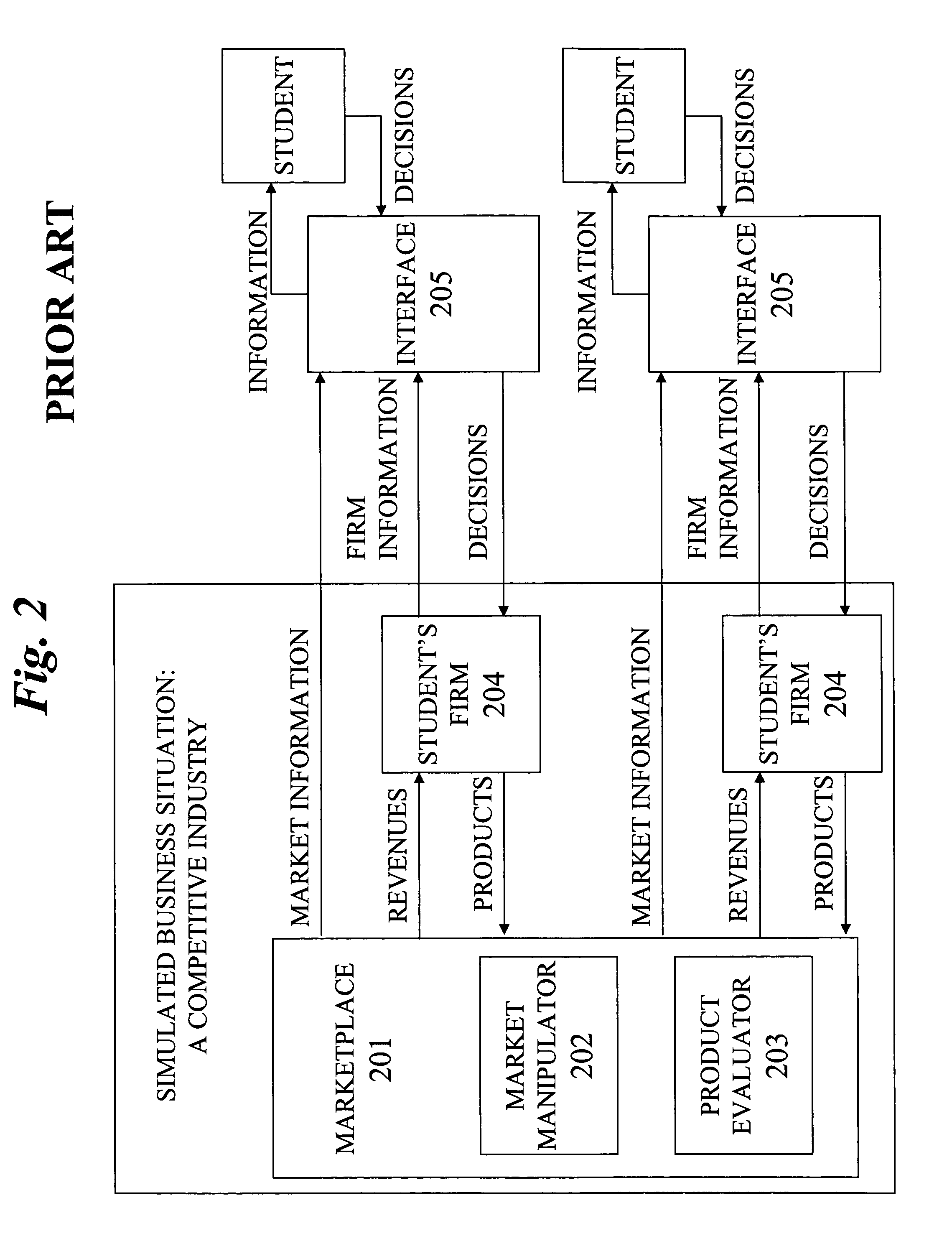Management training simulation method and system
a management training and simulation technology, applied in the field of management training simulations, can solve the problems of difficult learning environment, high penalties for failure, complexity preventing a manager from engaging in the playful, mistake-driven experimentation
- Summary
- Abstract
- Description
- Claims
- Application Information
AI Technical Summary
Benefits of technology
Problems solved by technology
Method used
Image
Examples
Embodiment Construction
[0145]By way of overview, the present invention improves MTSs by building upon new ideas from the fields of evolutionary economics, evolutionary biology, and genetic algorithms, and from studies in the management of innovation. Primarily, and with additional important consequences, the present invention improves MTSs' modeling of information, knowledge, and innovation. For the purpose of exposition, the sections titled “Introduction and Definitions,”“Illustrative Embodiment,”“Ramifications,” and “Embodiments that Make Two Great Improvements to MTSs” describe the specific class of MTSs called competitive industry MTSs. Those versed in the art will appreciate that the invention described herein also applies to MTSs that emphasize other business situations. Thus, the later section titled “The General Case” describes more general instantiations of the current invention. In addition, several sections further broaden the scope of this disclosure in addressing additional features, aspects,...
PUM
 Login to View More
Login to View More Abstract
Description
Claims
Application Information
 Login to View More
Login to View More - R&D
- Intellectual Property
- Life Sciences
- Materials
- Tech Scout
- Unparalleled Data Quality
- Higher Quality Content
- 60% Fewer Hallucinations
Browse by: Latest US Patents, China's latest patents, Technical Efficacy Thesaurus, Application Domain, Technology Topic, Popular Technical Reports.
© 2025 PatSnap. All rights reserved.Legal|Privacy policy|Modern Slavery Act Transparency Statement|Sitemap|About US| Contact US: help@patsnap.com



